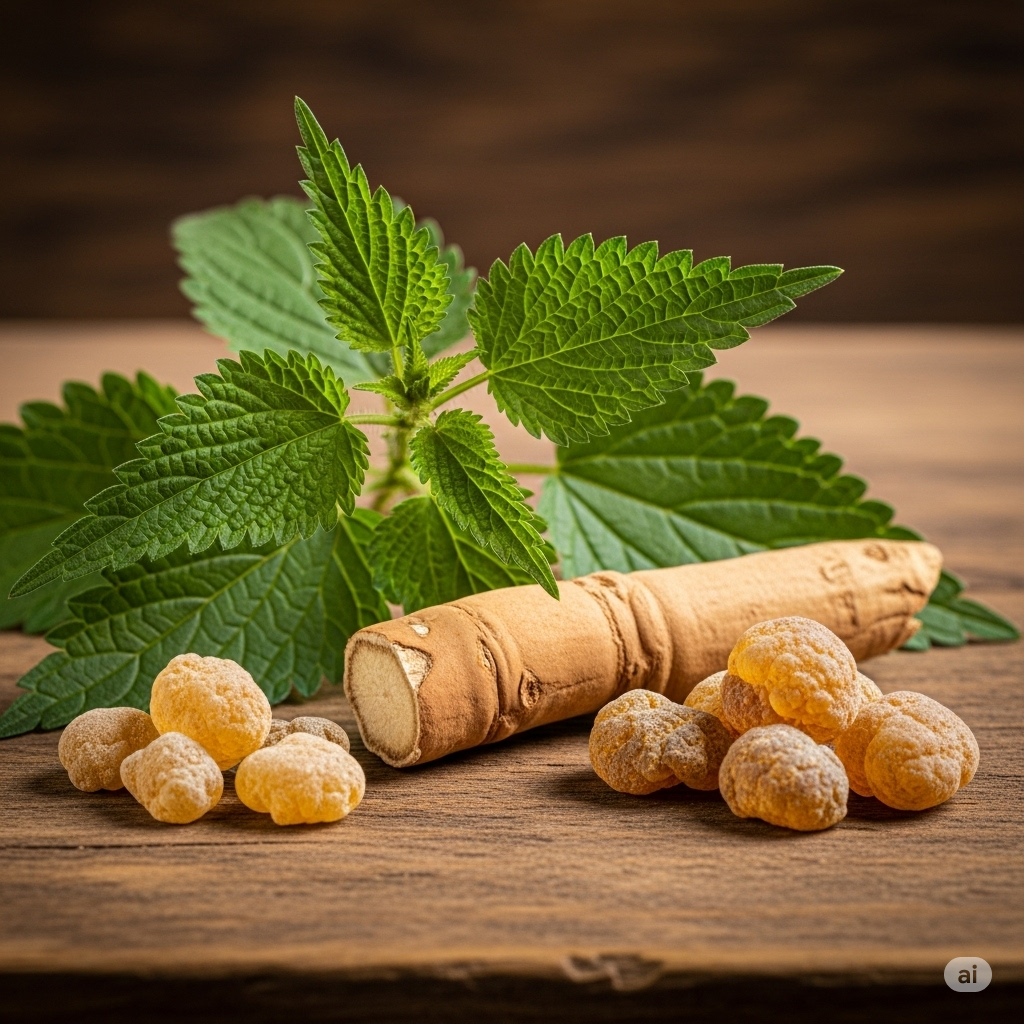
Traditional Stinging Nettle: Grounded In Traditions Tincture
Traditional Stinging Nettle
Discover the time-honored benefits of Stinging Nettle (Urtica dioica), a vibrant plant traditionally treasured for centuries across various cultures for its rich nutritional profile and broad range of supportive qualities. Often used as a spring tonic, Nettle is a powerhouse of natural goodness.
Traditional Stinging Nettle Leaf
Discover Stinging Nettle (Urtica dioica), a vibrant plant traditionally treasured for centuries across various cultures for its unique characteristics and historical inclusion in culinary and herbal preparations. Often noted in spring traditions, Nettle has a long legacy of appreciation.
A Legacy of Traditional Use:
- Historical Nourishment: Stinging Nettle leaf has been historically recognized for its presence in traditional diets and as a component of spring herbal preparations.
- Culinary Tradition: Its leaves have been used in traditional cooking much like other green, leafy vegetables.
- Topical Preparations: Traditionally, Nettle has also been incorporated into preparations for skin and hair care, valued for its contribution to such formulas.
- Herbal Infusions: Commonly enjoyed as an herbal tea or infusion, appreciated for its distinct, earthy flavor.
2. Traditional Ashwagandha Root
Embrace Ashwagandha (Withania somnifera), one of the most revered herbs in the ancient tradition of Ayurveda. Known by various names, including "Indian Ginseng" in traditional contexts, Ashwagandha root has been utilized for millennia within these historical wellness practices.
A Cornerstone of Ayurveda:
- Ayurvedic Heritage: Ashwagandha holds a significant and esteemed place in the rich history of Ayurvedic philosophies and herbalism.
- Traditional Formulas: It is a key botanical included in many traditional Ayurvedic formulas and preparations that are part of a balanced lifestyle approach.
- Historical Recognition: Known as a "Rasayana" in Ayurveda, Ashwagandha is recognized within that system for its traditional role in wellness philosophies.
- Unique Character: Appreciated for its distinct characteristics when used in traditional herbal blends.
3. Traditional Guggul Resin
Explore Guggul (Commiphora wightii), a prized resin with a history of use spanning thousands of years in Ayurvedic tradition. It is well-regarded for its unique aromatic qualities and its significant role in numerous traditional Ayurvedic formulas.
An Ancient Ayurvedic Resin:
- Historical Significance: Guggul is a key resin in the Ayurvedic tradition, where it has been utilized in various preparations.
- Aromatic Qualities: Known for its distinct fragrance, Guggul resin has been used traditionally as an incense and in aromatic blends
- Inclusion in Traditional Practices: Traditionally, Guggul has been part of Ayurvedic practices that include concepts like "shodhana" (referring to traditional purification methods).
- Ayurvedic Formulations: It is a component in many classical Ayurvedic formulations that are intended to be part of a traditional approach to overall well-being.
General Disclaimer for all Herbal Descriptions (to be included with each product): These statements have not been evaluated by the Food and Drug Administration. This product or herb is understood within traditional wellness practices for general appreciation and is not intended to diagnose, treat, cure, or prevent any disease. Please consult with a healthcare professional or qualified herbalist before using this or any herbal supplement, especially if you are pregnant, nursing, have a medical condition, or are taking any medication. Keep out of reach of children.
Choose options
